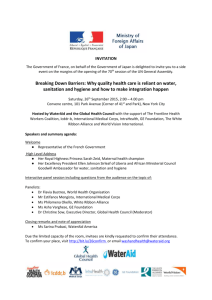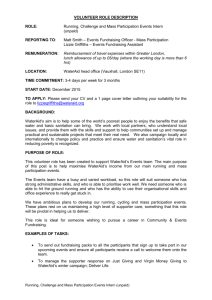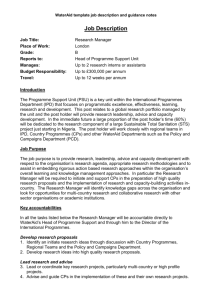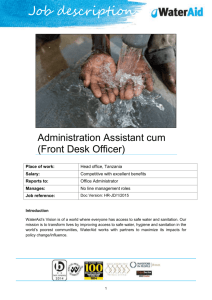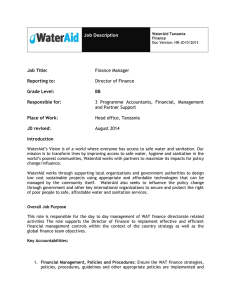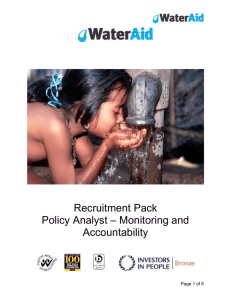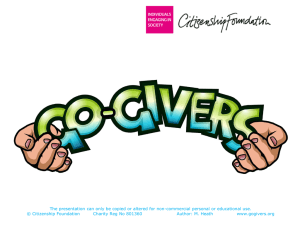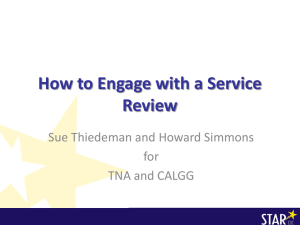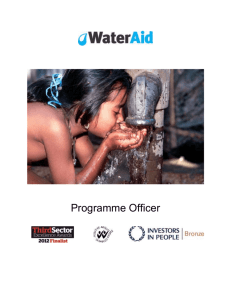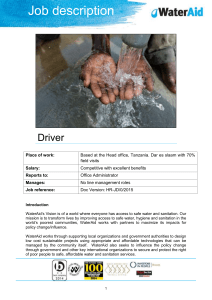WaterAid
advertisement
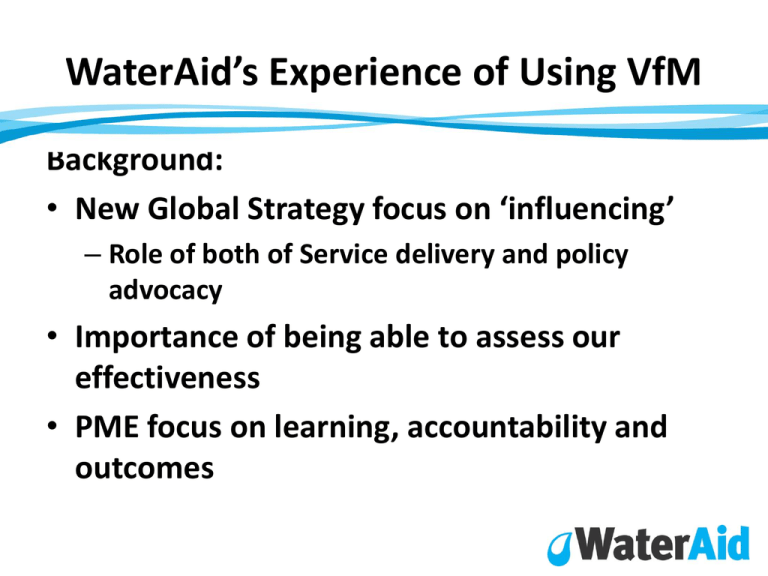
WaterAid’s Experience of Using VfM Background: • New Global Strategy focus on ‘influencing’ – Role of both of Service delivery and policy advocacy • Importance of being able to assess our effectiveness • PME focus on learning, accountability and outcomes WaterAid’s Experience of Using VfM Approach taken: • Opportunity to work with NEF and try SROI approach to measuring outcomes which are typically hard to measure and value • Planned to look at work in one or two Country Programmes and identify outcomes for inclusion. • Key criterion: availability of existing evidence and data. WaterAid’s Experience of Using VfM What worked well: • Process of building up evidence base from outcomes. • Applying a structured (rigorous) process • Example of applying a theory of change • Helped clarify and evidence the link between policy advocacy and service delivery work WaterAid’s Experience of Using VfM Challenges: • Number of potential outcomes that we tried to work up from project/programme level did not work up. • Problems of weak evidence and no clear linkage between lower and higher level outcomes • Looking at a few examples led to questioning on whether we had a ‘body of evidence’ • Too many assumptions at higher levels (RoI) WaterAid’s Experience of Using VfM What did we learn: • Developing a body of evidence is fundamental– having a methodology is helpful but it must be applied in practice • Use of information to different groups and importance of analysis. • Using examples to illustrate • Addressing contribution (and disagregation)
